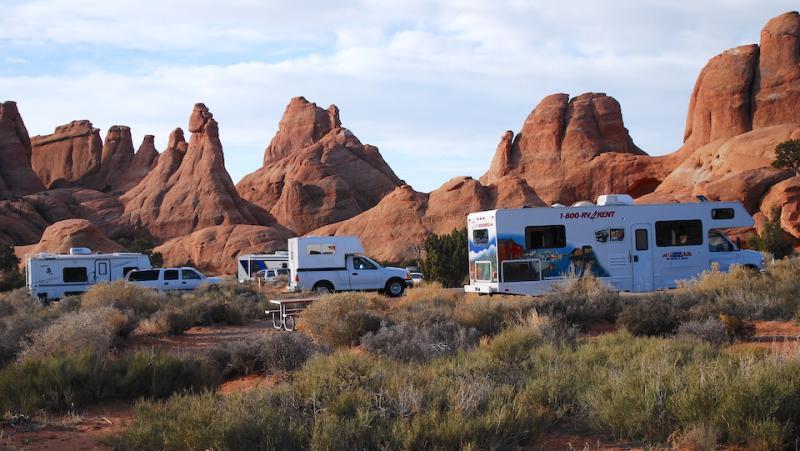
An advisory committee that called for modernizing national park campgrounds was quietly disbanded on November 1/Kurt Repanshek file
An advisory committee on recreation on public lands established by former Interior Secretary Ryan Zinke was quietly disbanded earlier this month by National Park Service Deputy Director David Vela.
The Park Service did not make the move widely known, and only shared it with the Traveler on Tuesday in the wake of an editorial that mentioned the committee's efforts to see National Park System campgrounds "modernized."
"The Outdoor Recreation Advisory Committee was terminated on Friday, November 1. The ORAC was created by Secretary Zinke in 2017, and like any Federal Advisory Act group, was simply an advisory body to the Department of the Interior and the Secretary of the Interior," read a prepared statement from Vela, the de factor director of the Park Service.
Vela added that the agency was reviewing recommendations made by the committee, including the one on modernizing campgrounds. The committee had called for improved WiFi, food trucks, a mobile "camp store," and other improvements to national park campgrounds.
"No action has been taken on the committee's recommendations nor will any action be taken in the future unless and until the Department of the Interior and the National Park Service determine the recommendations will improve the visitor experience, protect national park resources, and are determined to be prudent investments," he added. "With growing interest in expanding and supporting public recreational access, the NPS is working to create a second century campground experience that supports sound investment and management for campgrounds that may be enjoyed by all. To this end, we are coordinating a campground modernization and rehabilitation strategy."
The deputy director said the Park Service isn't planning on modernizing every campground in the system, "but strives to make smart, consistent decisions on when to modernize or rehabilitate a campground based on the park’s unique circumstances, local market and financial factors, and applicable policies and regulations. As we implement this strategy, the NPS will engage the public and stakeholders for their feedback.
There are 1,421 campgrounds in the National Park System, with 1,340 managed by NPS and 81 managed through concessions contracts.
The variety of available NPS campground facilities and amenities is extremely broad, from primitive, unstaffed backcountry campsites to campgrounds that provide hot showers or can accommodate 25’ recreational vehicles. Campgrounds are also managed through multiple models; some campgrounds are operated by the NPS, some by concessioners, and a few by other partners.
Through the use of concession contracts or commercial use authorizations, the NPS provides commercial visitor services that are necessary and appropriate for public use and enjoyment. The park superintendent and concessions management team decide when it is necessary and appropriate to transfer operations to a concessioner based on park enabling legislation, planning documents, and substantial local market analysis.
The deferred maintenance for campgrounds and related structures in national park sites is approximately $331.6 million. Of this, approximately $30.2 million resides in concession-assigned campgrounds and related structures. The total campground deferred maintenance need reflects 2.8 percent of the FY 2018 servicewide deferred maintenance total of $11.9 billion.
Examples of what the National Park Service is already doing to modernize national park campgrounds in an appropriate manner:
* Sleeping Bear Dunes National Lakeshore in Michigan will be renovating the comfort stations showers to make them Architectural Barriers Act compliant in Platte River Campground.
* Chickasaw National Recreational Area in Oklahoma will be replacing shower assemblies, including associated electrical and plumbing, at Point and Buckthorn campgrounds.
* Mount Rainier National Park replaced its wireless local area network (LAN) access point equipment in 2019 due to obsolete components that were no longer compliant with DOI and NPS security standards.
NPS is actively engaging hospitality services contractors to investigate the market support, required analysis, and related business practices to support a campground modernization and rehabilitation strategy.

 Support Essential Coverage of Essential Places
Support Essential Coverage of Essential Places







Comments
The obvious problem is overwheming overuse. We need to learn to titrate usage as on river trips and hunting limits. Food trucks not so much.
I'm one of many seniors that purchased a lifetime pass to our national parks. Now I hear those passes will not be valid at all times--- what can members do to overturn this change?
How about considering a big change in your personal philosophy of life? How about the first step in that change being to think about the parks and the future before immediately stomping your feet to insist on getting your personal share?